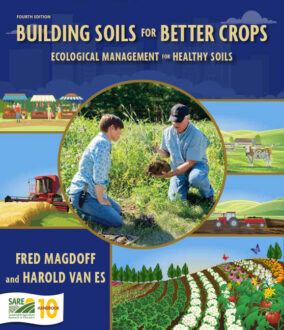The 4th edition of Building Soils for Better Crops is a one-of-a-kind, practical guide to ecological soil management. It provides step-by-step information on soil-improving practices as well as in-depth background—from what soil is to the importance of organic matter. It will show you how different physical, chemical and biological factors of the soil interconnect, and how management practices impact them to make your soil healthy and resilient or unhealthy and vulnerable to degradation.
Case studies of farmers from across the country provide inspiring examples of how soil—and whole farms—have been renewed through these techniques. A must-read for farmers, educators and students alike.
